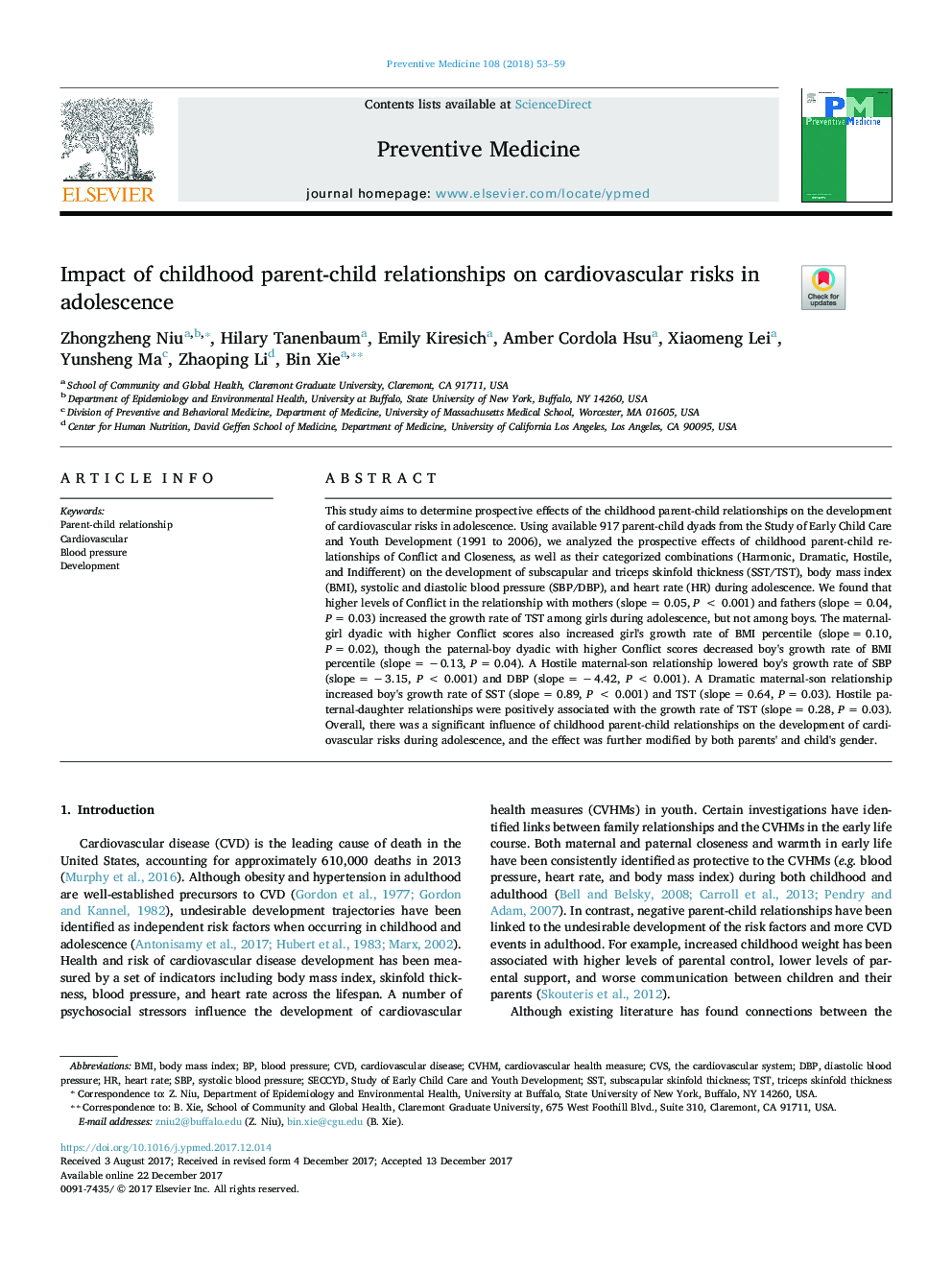| Article ID | Journal | Published Year | Pages | File Type |
|---|---|---|---|---|
| 8693630 | Preventive Medicine | 2018 | 7 Pages |
Abstract
This study aims to determine prospective effects of the childhood parent-child relationships on the development of cardiovascular risks in adolescence. Using available 917 parent-child dyads from the Study of Early Child Care and Youth Development (1991 to 2006), we analyzed the prospective effects of childhood parent-child relationships of Conflict and Closeness, as well as their categorized combinations (Harmonic, Dramatic, Hostile, and Indifferent) on the development of subscapular and triceps skinfold thickness (SST/TST), body mass index (BMI), systolic and diastolic blood pressure (SBP/DBP), and heart rate (HR) during adolescence. We found that higher levels of Conflict in the relationship with mothers (slope = 0.05, P < 0.001) and fathers (slope = 0.04, P = 0.03) increased the growth rate of TST among girls during adolescence, but not among boys. The maternal-girl dyadic with higher Conflict scores also increased girl's growth rate of BMI percentile (slope = 0.10, P = 0.02), though the paternal-boy dyadic with higher Conflict scores decreased boy's growth rate of BMI percentile (slope = â 0.13, P = 0.04). A Hostile maternal-son relationship lowered boy's growth rate of SBP (slope = â 3.15, P < 0.001) and DBP (slope = â 4.42, P < 0.001). A Dramatic maternal-son relationship increased boy's growth rate of SST (slope = 0.89, P < 0.001) and TST (slope = 0.64, P = 0.03). Hostile paternal-daughter relationships were positively associated with the growth rate of TST (slope = 0.28, P = 0.03). Overall, there was a significant influence of childhood parent-child relationships on the development of cardiovascular risks during adolescence, and the effect was further modified by both parents' and child's gender.
Keywords
Related Topics
Health Sciences
Medicine and Dentistry
Complementary and Alternative Medicine
Authors
Zhongzheng Niu, Hilary Tanenbaum, Emily Kiresich, Amber Cordola Hsu, Xiaomeng Lei, Yunsheng Ma, Zhaoping Li, Bin Xie,
